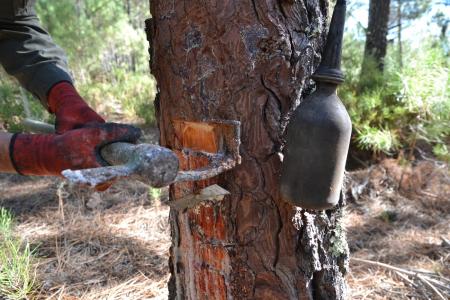
Objective:
The PinusResina initiative aims to identify/establish new value chains for the competitive and safe transformation and recovery of pine resin in high value-added products, with the mission of increasing the competitiveness and sustainability of Pinus pinaster and Pinus pinea forest in Portugal, in particular by enhancing resin constituents for new fine chemistry markets - resin chemical industry as the main economic factor in pine ecosystems; toxicity assessment of derived products; analyze the variability of resin composition, biotransformation and the exploitable capacity of waste resulting from its exploitation; and evaluate the sustainability of new value chains.
Context:
Innovation and increasing knowledge about an important resource of the Portuguese forest supports its differentiated exploitation when compared to foreign producers, improving efficiency and competitiveness in forest management. Portuguese resin stands out from the rest due to its superior quality and potential application in the fine chemical industry. It is, however, an unexplored resource, the process involves the bio-transformation of its compounds (acids), mainly through isomerization, into abietic acid, and into dehydroabietic, through dehydrogenation.
Contacts:
João Nunes, joao.nunes@blc3.pt
Carolina Nunes, carolina.nunes@blc3.pt
Cristina Pereira, spereira@itqb.unl.pt
Carlos Afonso, carlosafonso@ff.ulisboa.pt